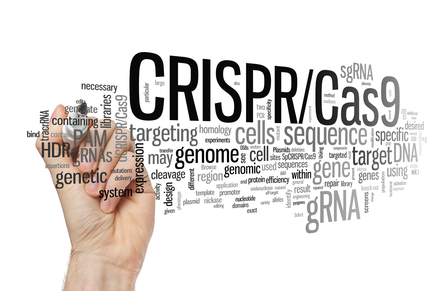 The National Academy of Sciences (NAS) and the National Academy of Medicine (NAM) recently issued a consensus report, “Human Genome Editing: Science, Ethics, and Governance,” on editing the human genome using a powerful technique called CRISPR/Cas9. This technique enables changes to be made not only to an individual’s genetic makeup, but also to the human germ line. Such genetic manipulations are heritable, and therefore affect future generations.
The National Academy of Sciences (NAS) and the National Academy of Medicine (NAM) recently issued a consensus report, “Human Genome Editing: Science, Ethics, and Governance,” on editing the human genome using a powerful technique called CRISPR/Cas9. This technique enables changes to be made not only to an individual’s genetic makeup, but also to the human germ line. Such genetic manipulations are heritable, and therefore affect future generations.
Almost two years ago in this space, I wrote “Altering Genetic Material: A Line That Must Not Be Crossed.” At that time, scientists in China had recently conducted an experiment using this technique to edit the genes of embryos, without seeking to implant the genetically altered embryos. Their attempt involved numerous flaws, which contributed to my worry about the premature use of gene editing. The international scientific community also called the technique premature given the state of scientific knowledge and technical capability at the time. My conclusion was that attempts to alter the human germ line should be prohibited for safety reasons. I wrote: “Genes that should not have been altered might be altered irrevocably. Collateral damage could occur to some or all genes. And any devastating results would continue for generations.”
A new look at genetic editing
So what makes this new document so important? Reports from the National Academies have traditionally been highly respected by governmental agencies responsible for legislation and regulation of science and medicine in the United States. This report has changed my mind about gene editing. Here’s why:
The NAS-NAM committee that issued the latest report comprised leading scientists from the U.S. and abroad. It also included prominent bioethicists known for their work in human genetics. (The co-chair of the committee is a leading lawyer/bioethicist.) The 171-page report covers scientific, ethical, regulatory and public-engagement topics. In the matter of greatest concern to me—the safety of the gene-editing tool—the report says: “More research is needed before any germline intervention could meet the risk/benefit standard for authorizing clinical trials,” and “Heritable germline genome editing trials must be approached with caution, but caution does not mean they must be prohibited.”
The standard for determining the ethics of any type of experimental intervention is a favorable balance of anticipated benefits over risks of harm. In using this innovative technique, we have to trust the expertise of leading scientists, as we have done when any novel biomedical technique has been introduced for use in human beings. The committee’s recommendation 5.1 says: “Clinical trials using heritable germline genome editing should be permitted only within a robust and effective regulatory framework.” The restrictions specified in this recommendation include limiting the use of the technique to “preventing a serious disease or condition” and “editing genes that have been convincingly demonstrated to cause or to strongly predispose to that disease or condition.”
Taking a stand on “enhanced” humans
The NAS-NAM report also covers another ethically controversial topic: the use of gene editing to enhance normal aspects of human functioning. In contrast to gene editing for the purpose of eradicating serious, heritable diseases, the technique could potentially be used to seek to create individuals who are smarter, stronger or more musically or artistically gifted. The creation of so-called “designer babies” (with enhanced characteristics that would be passed on to their future generations) raises a question of social justice.
We already live in a country—and a world—of haves and have-nots. It’s reasonable to believe that only the wealthy in any society would be able to avail themselves of these scientific enhancements, further widening the gaps among social classes. The NAS-NAM report, in recommendation 6.1, is unequivocal in its rejection of gene editing for this purpose: “Regulatory agencies should not at this time authorize clinical trials of somatic or germline genome editing for purposes other than treatment or prevention of disease or disability.” The wording of this recommendation is not likely to allay the worries of staunch opponents of enhancement. The inclusion of the temporal limitation—“at this time”—opens the door to future acceptance of gene editing for this purpose. As one opponent said, “I don’t think there’s any way to keep that genie in the bottle.”
Getting the public involved
Finally, and significantly, the NAS-NAM report devotes an entire chapter to public engagement regarding the future use of germline gene editing. It provides a thorough and thoughtful look at the importance of making scientific information clearly understandable in communications to the public, and calls for a process of public consultation. It outlines the various past and existing mechanisms for engaging the public and envisions adding new ones. The chapter ends with five recommendations (more than any other chapter), the first of which, recommendation 7.1, says: “Extensive and inclusive public participation should precede clinical trials for any extension of human genome editing beyond treatment or prevention of disease or disability.”
So why did I change my mind about the ethical permissibility of germline gene editing? The main reason is trust. Trust in the scientific community, as evidenced by the caution expressed in the NAS-NAM report. Trust in the academy itself. And trust in the commitment to involve bioethicists on committees such as this, and the report’s emphasis on ensuring public engagement. That’s why I believe this document benefits the public interest: it’s a carefully crafted middle ground between prohibition of germline gene editing and a laissez-faire approach.

